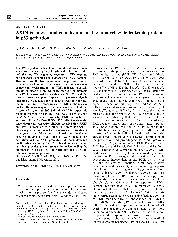摘要
The PML protein is best known for its role as a tumor suppressor for acute promyelocytic leukemia. Both PML and the key Wnt signaling regulator AXIN regulate p53-dependent apoptosis in response to DNA damage. However, how the two major tumor suppressors coordinate with each other is unknown, and the molecular components orchestrating the PML-induced apoptosis remain enigmatic. Here we show that AXIN interacts with PML in vivo, and further that AXIN, PML and p53 form a ternary complex. Exposure to genotoxic signals including UV and doxorubicin induces AXIN to enter into the nucleus where it colocalizes with PML in the nuclear bodies. Domain-mapping experiments revealed that the C-terminal region (aa 597-832) of AXIN is responsible for its interaction with PML. AXIN fails to activate p53 in PML(-/-) cells, and conversely, PML is unable to activate p53 in AXIN-null SNU475 cells. Consistently, knockdown with respective siRNAs revealed that AXIN and PML depend on each other to elevate p53-Ser-46 phosphorylation and to induce apoptosis after treatment with genotoxins. Moreover, we found that dominant-negative mutants of PML blocked AXIN-induced p53 activation, and that AXIN promotes PML sumoylation, a modification necessary for PML functions. Our finding has thus provided a new avenue for understanding the mechanism by which PML activates p53 and exerts its role as a tumor suppressor. Oncogene (2011) 30, 1194-1204; doi:10.1038/onc.2010.499; published online 8 November 2010
- 出版日期2011-3
- 单位厦门大学
